Ranthambore Fort : Ranthambore Fort is a historical fort located in the Ranthambore National Park in the Sawai Madhopur district of Rajasthan. Ranthambore Fort is one of the oldest Rajput forts in India. Ranthambore Fort is situated on a hill, from where a beautiful view of the surrounding area is visible. Ranthambore Fort has a detailed history. Ranthambore Fort, which has always been invincible, is still telling its story through its ruins.
Ranthambore was ruled by the Chauhan dynasty. This is the same Chauhan dynasty in which great kings like Prithviraj Chauhan are known even today for their bravery, courage and intelligence. Prithviraj Chauhan did not allow Muhammad Ghori to enter India during his lifetime. Ranthambore Fort tells the stories of the same Chauhan dynasty.
This fort has faced many attacks and has seen many kings winning and losing. The dense forest surrounding it not only provides additional protection to the fort but also keeps a connect with nature. Ranthambore Fort attracts history buffs and nature and wildlife enthusiasts alike.
रणथंभौर का किला | Ranthambore Fort Hindi
Sawai Madhopur – Ranthambore Fort
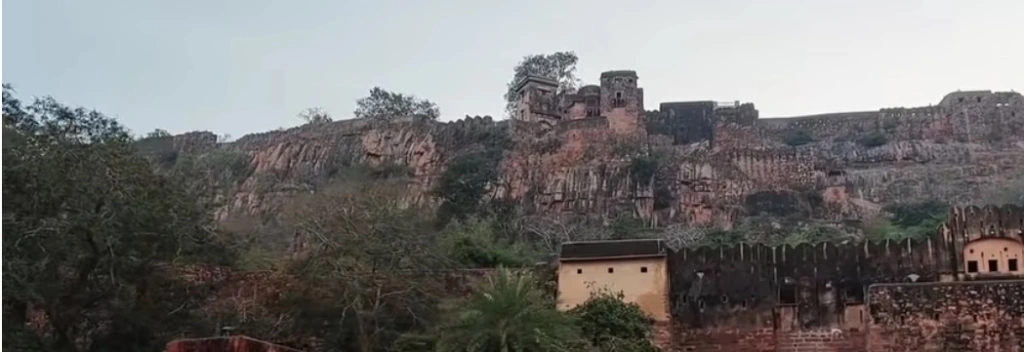
Ranthambore Fort or Ranthambore Durg is located in Sawai Madhopur, Rajasthan. Standing at a distance of 13 kilometers from Sawai Madhopur Railway Station, this huge fort is still a symbol of its grandeur and power. This fort is built between two hills, the name of one hill is Ran and the other is Tham, between these two hills there is a small valley which is called Bhawar, in this way this fort has these three words in its name. It means Ran + Tham + Bhavar and thus with time this fort came to be known as Ranthambore.
How old is Ranthambore Fort
Historians have different opinions about when Ranthambore Fort was built. Some believe that this fort was built in the 10th century, while there are some sculptures and structures inside the fort which are said to have been here since the fifth century. Certainly it took a few centuries to build the Ranthambore Fort. Generally, the construction of this fort started in the 5th century and then the coming generations kept building it at different times.
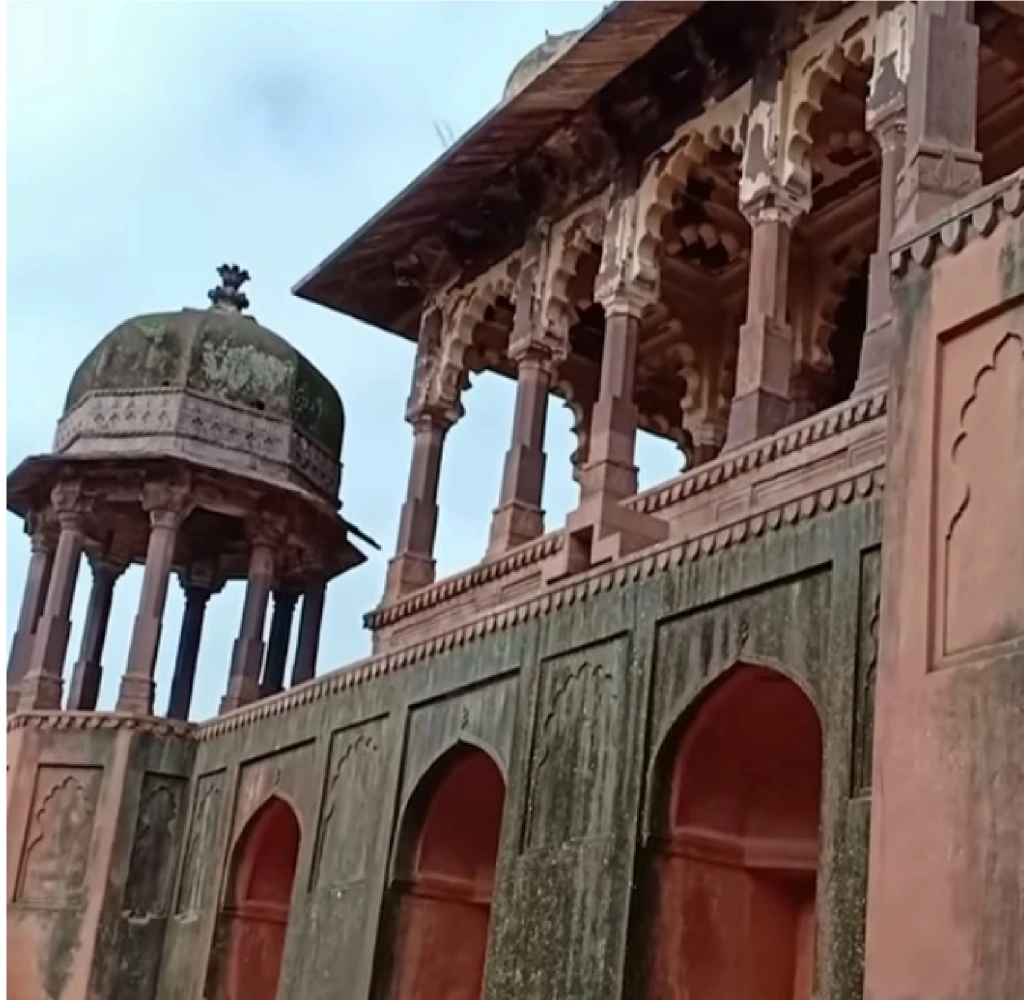
Ranthambore Fort is built amidst the forest in such a way that it seems printed in the middle of the hills. The forts of Rajput kings were built in such a way that the fort was not visible unless one reached very close to the fort. This fort is completely hidden in the forest of Ranthambore. Similar locations are also in Kumbhalgarh Fort and Chittaurgarh Fort.
Ranthambore Fort was like a strong wall between North India and Central Asia. Many times the invaders from Central Asia had to return from this fort facing defeat.
History – Ranthambore Fort

Ranthambore Fort was built during the Chauhan rule. This fort of the ancestors of King Prithvi Raj Chauhan was earlier known by the name Ranastambh. The construction of Ranthambore Fort started during the reign of Chauhan king Sapaldaksha and the construction of this fort continued for the next 2 centuries.
In 1192, when the last war took place between Prithviraj Chauhan and Muhammad Ghori, this fort was taken over by his son Govindraj but he was not an independent ruler. After the death of Qutubuddin Aibak in 1210, Ranthambore Fort became independent from the suzerainty of the Delhi Sultanate. After this, Iltutmish again captured this fort in the year 1226 and after his death, the Chauhan dynasty again captured it in the year 1236. Took possession of it. In this way, this fort was snatched from the Chauhan dynasty many times but later from 1283, King Hamirdev ruled Ranthambore. Raj Hamirdev was the last king of the Chauhan dynasty.
Raja Hamirdev Chauhan and Alauddin Khilji
Raja Hamir Dev had given shelter to Alauddin Khilji’s rebel Muhammad Shah in his fort. Angered by this, Alauddin Khilji attacked the Ranthambore fort. Alauddin Khilji’s army kept attacking here for 6 consecutive years and every time he had to face defeat.
In the last attack, Alauddin Khilji himself reached Ranthambore Fort with his army. Raja Hamir Dev’s generals Bhojraj and Ratipal met Alauddin Khilji and betrayed Raja Hamir Dev. The king and his army set out for the Saka Kar war. Saka means getting ready to die. It was a tradition among Rajput kings that if the king went to war with his army after doing Saka, then after defeat there would be no attachment to life.
After a long war, Alauddin Khilji along with treacherous generals treacherously captured the fort of Ranthambore. After this attack, the queen of Hamir Dev along with a large number of women took Samadhi in Jauhar Kund and her daughter Padma committed Jal Jauhar. On the other hand, King Hamirdev got victory in the war and when he came here, he saw the victory flag of Alauddin Khilji waving on his fort.
All this was the ploy of Alauddin Khilji and the treacherous generals. They stopped King Hamirdev at the palace gate and closed the doors of the palace. Seeing all this and knowing that everything was over, King Hammir Dev went from here towards the forest of Ranthambore and dedicated his head to his beloved Lord Shiva.
After this, Alauddin Khilji handed over the fort of Ranthambore to his representative but later in 1327, King Hamir Singh Shishodiya of Mewar captured it. After this, Ranthambore fort remained under the Shishodiya kings till 1468 and later it was given to Hada Raja of Bundi.
In the year 1568, Akbar attacked the fort and took control of it and after that the Ranthambore fort remained under Mughal rule for 2 centuries. In the 18th century, Ranthambore Fort was given to the Kachwaha dynasty of Jaipur and after that it remained with them till India became independent.
After 1964, it is under the control of the Archaeological Survey of India. Ranthambore Fort is also included in the list of UNESCO World Heritage Sites.
Architecture – Ranthambore Fort

There is a strong high wall around Ranthambore Fort which protects the fort from external attacks. The architecture of Ranthambore Fort is of old Rajputi style. In Rajput architecture the gate is called Pol. Architecture influenced by Hindu temples can be seen at the gate of the fort. There are total 7 poles in Ranthambore Fort:
Nav Lakha Pol, Hathi Pol, Ganesh Pol, Bada Darwaza, Suraj Pol, Delhi Pol and Sat Pol.
Nav Lakha Pol-Ranthambore Fort
Nav Lakha Pol is the main gate of Ranthambore Fort. This pole is hidden behind a wall. This was done as a strategy so that force could not be applied on the door by running straight. Also, there is a pointed iron structure on Navlakha pole so that elephants cannot break it by applying force during attack.
The doors of Ranthambore Fort are made in such a way that breaking them and entering the fort is an impossible task. There is no open space in front of these gates or poles but a wall, due to which it cannot be opened by applying force. Neither can be broken.
While going from Navlakha Pol towards Hathi Pol, statues of five gods are installed on the way. It is believed that these sculptures were installed here in the fifth century when the construction of this fort started. These five gods are Lord Shiva, Hanuman, Ganesha, Bhairon and Goddess Shakti.
Hathi Pol – Ranthambore Fort
Hathi Pol Gate is the second security gate. Even if an enemy enters Ranthambore Fort through Navlakha Gate, it is impossible to enter further without breaking the elephant pole. There is no protective wall in front of Hathi Pol gate but there is a big rock which protects this gate of the fort.
The shape of this rock is such that it appears in the form of the idol of Lord Ganesha and perhaps that is why this gate was named Hathi Pol.
While this rock is placed on one side of the elephant pole, on the other side of the gate, a stone head and arm are also placed, keeping alive the story of Ranmal’s betrayal. It tells the story of Alauddin Khilji’s attack on the Ranthambore fort and the betrayal of Ranmal and his two companions Bhojraj and Ratipal. Ranmal, Bhojraj and Ratipal along with Alauddin Khilji had planned to defeat King Hamirdev Chauhan.
King Hamirdev Chauhan had killed Ranmal here by cutting off his head and arms on an elephant pole.
Ganesh Pol – Ranthambore Fort

Ganesh Pol is the third gate of Ranthambore Fort. King Hamirdev Chauhan, who returned victorious from the war, was stopped at this gate by his treacherous Bhojraj and Ratipal. Both of them had closed this gate and stopped the king from going inside the fort. By that time all the queens and other women along with them had committed Jauhar inside the fort.
The king could not go inside and then due to grief, he climbed the rocks from here and went towards the Ranthambore forest through Satpura Gate.
Next to this comes the Welcome Gate which is also called Torandwar Gate. After reaching this gate, flowers etc. were showered to welcome the king who returned from the war. That is why this gate is called welcome gate.
Trinetra Ganesh Temple – Ranthambore Fort
There is a Trinetra Ganesh temple inside the Ranthambore Fort. Thousands of devotees send letters every day to Lord Ganesha established in this temple. The Ganesh idol installed in the Trinetra Ganesh temple is said to be 6 thousand years old. It is believed to be from the time of Lord Krishna and it is said that the invitation for the marriage of Lord Krishna and Rukmani was first received in this temple. This tradition is followed even today and The first invitation card for any wedding in the surrounding area is also sent to Trinetra Ganesh Temple.
Badal Mahal – Ranthambore Fort
It is in the northern part of the palace. The name of Raja Hamir Singh’s horse was Badal. It is said that this palace was named Badal Mahal after him. There is a big 84 pillared hall in this palace where Raja Hamir Singh used to hold his meetings.
32 Pillar / Battis Khamba Chhatri – Ranthambore Fort
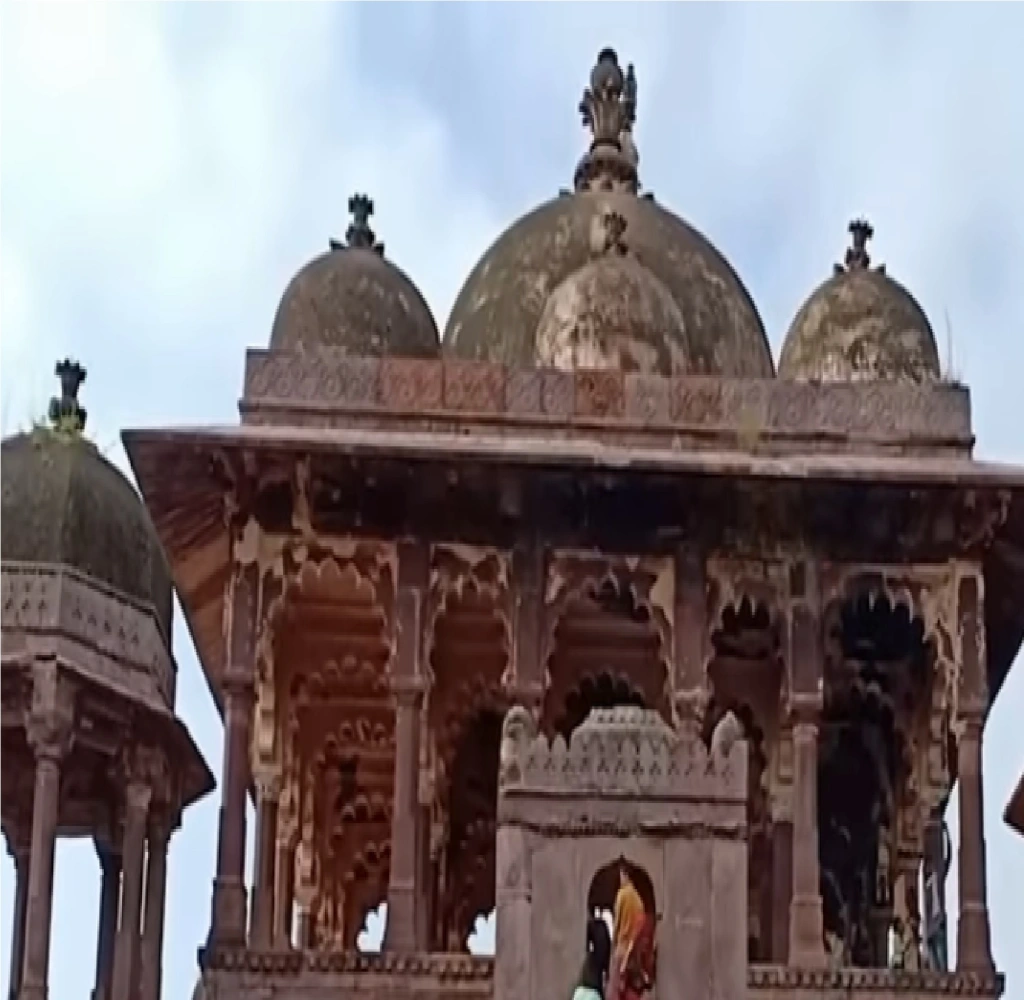
There is a three-storey building inside the Ranthambore Fort which is made of thirty-two pillars. There is a roof over these thirty-two pillars and hence its name is Batis Khamba Chhatri. This Chhatri was built by Raja Hamirdev to pay tribute to the 32 years of successful rule of his father Raja Jayant Singh Chauhan.
Hamir Court – Ranthambore Fort
This is an open court or courtyard. It is named Hamir Court or Hamir Aangan after the name of King Hamirdev. It was made in such a way that even the slightest whispering sound in it can be heard clearly.
Hamir Kachahri – Ranthambore Fort
Inside the fort there is Hamir Badi Kachari and Chhoti Kachari. It was built by Raja Hamir Singh. Hamir Kachari is in front of Delhi Gate. At this place the king used to handle his administrative work.
Gupt Ganga – Ranthambore Fort
The secret Ganga flows in the Ranthambore Fort complex. This water stream flows from beneath the ground. To see the flow of the secret Ganga, one has to descend directly into the underground temple. It is a natural cave like temple. This secret Ganga can be seen by going down here. There is a forest spread around Gupt Ganga, around which wild animals are also seen. Sometimes leopards also come here.
Surwal Lake – Ranthambore Fort
Surwal Lake is a seasonal lake and often dries up during the summer season. One should come here during rainy season. During the rainy and winter seasons, Surwal Lake is a center for bird watching from far away places. This lake amidst Ranthambore forest is also a perfect place for nature photography.
Padma Lake
This lake was called Padma Lake after the name of Padmavati, daughter of King Hamirdev. According to the Rajput tradition of that time, after the defeat in the war, married women used to perform Agni Jauhar while unmarried girls used to sacrifice their lives by performing Jal Jauhar.
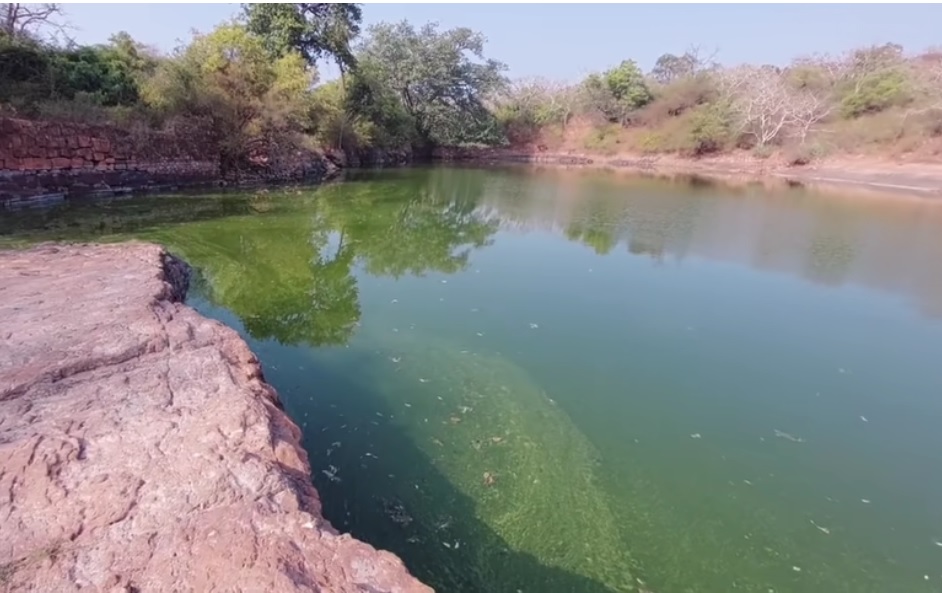
During the war between Alauddin Khilji and King Hamirdev, when the news was sent to the Ranthambore fort that the king had been defeated, all the women present inside the fort committed Jauhar. While the queen and other married women performed Agni Jauhar, Princess Padma, being unmarried, performed Jal Jauhar and sacrificed her life by drowning in the waters of this lake.
Apart from all these main structures, there are many other historical buildings in Ranthambore Fort like Rani Mahal, Rani Talab, Adhoora Sapna, Andheri Pol etc. Ranthambore Fort is recognized in the world as a World Heritage Site / Heritage of World History. Due to this, the work of re-establishing the old remains and bringing history alive is still going on here.
In the coming few years, tourists will probably be able to see Ranthambore Fort in a better form than now.
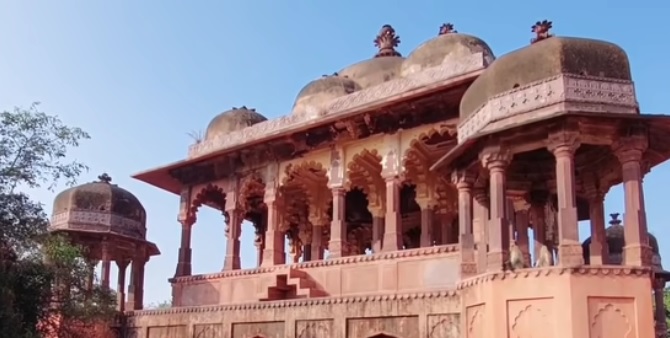
Ranthambore National Park
Ranthambore National Park is one of the largest and famous national parks of India. Animals like tiger, wild boar, deer, sambar etc. can be seen in the national park. More than 250 species of birds are found in Ranthambore National Park, so if you are an animal lover then you must visit here once. There are about 70 tigers here.
Best time to visit – Ranthambore
Although one can go to Ranthambore in any season, but since it is very hot here, the best time is from November to February. During this time you can fully enjoy the wildlife safari. Jungle safari in Ranthambore Fort has a different fun. This jungle safari can be enjoyed by open jeep.
How to reach – Ranthambore
Ranthambore is just 13 kilometers away from Sawai Madhopur. Sawai Madhopur is a railway station which is well connected to the rest of the railway routes of the country. If we talk about air route to reach Ranthambore, then Jaipur airport is the nearest. From here one can reach Ranthambore by bus or taxi. By train you can reach Sawai Madhopur station and from there you can easily reach Ranthambore by taxi or cab.
Food and Restaurants – Ranthambore
Rajasthan’s famous Dal Bati Churma, Garlic Chutney, Rajasthani Kadhi, Gatte Ki Sabzi, Bajra Roti and Khichdi, everything is available to eat here. Rajasthani food is known all over the world for its spicy spices and taste. The hospitality of Rajasthan is also very famous in the world.

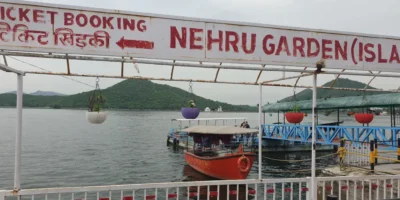

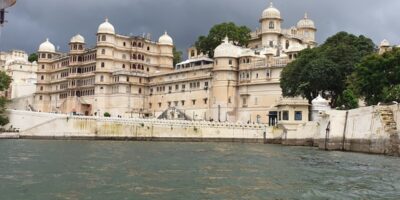
Leave a Reply